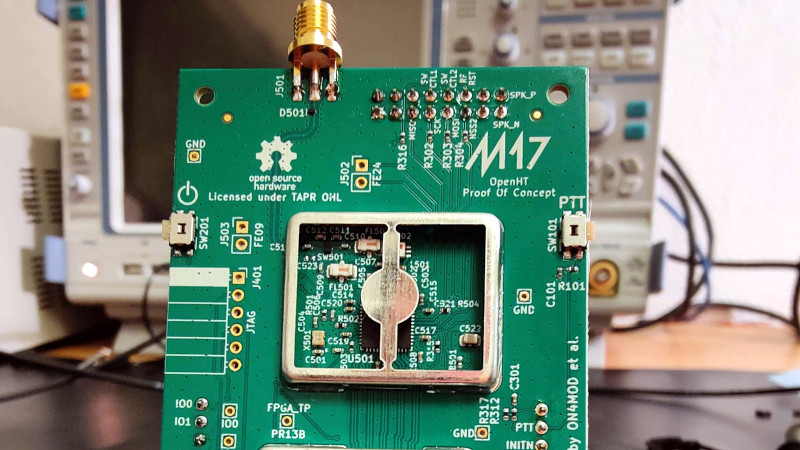The world of amateur radio is like many other fields in that there has been a move underway from analogue to digital modes. In fact, amateur radio has often led the way in digital innovation. There’s a snag, though: many of the digital speech modes are proprietary. To address this along comes the M17 project, an effort to create an open digital communication protocol for radio amateurs. We’ve looked at them more than once in the past few years, and as they’ve come up with several pieces of new hardware it’s time for another peek.
First up is the Remote Radio Unit, described as “a comprehensive, UHF FM/M17 “repeater in a box,” optimally designed for close antenna placement, enhancing signal strength and reliability.” The repeater forms the “other half” of the UHF handheld radio chain and will be crucial to the uptake of the protocol.
Then there’s OpenHT , their take on an SDR dual-band handheld radio for M17, and perhaps most interestingly for radio amateurs with existing radios, the Module 17 and its miniaturised Micro17 cousin, which are encoders and modems for any radio capable of handling 9600 baud serial communication.
You can read some of our previous M17 coverage here, and it’s very encouraging to see that this project is going places. If you want to see what they’ve been up to lately, check out their YouTube channel which has some older tests including the one below.
















“You can read some of our previous M17 coverage here”….. was the ‘here’ supposed to be a link or was that an invitation to search the archives?
It’s probably one these articles:
https://hackaday.com/2020/10/02/m17-aims-to-replace-proprietary-ham-radio-protocols/
https://hackaday.com/2023/08/05/break-free-from-proprietary-digital-radio/
Reviewed the https://m17project.org/ and associated pages, and blogs. Some practical examples should be provided where M17 can be most beneficial. From scanning it quickly, I took away that the new open-standard Codec-2 is flexible down through 700 bps on HF. M17 is also to benefit data transmission, with 100kbps tested. A new distributed digipeater protocol is required that would allow for IP tethers. APRS is so archaic and troublesome that any improvement is in the right direction, although better OTA traffic control, and some error correction would be most welcome. Will the Chinese vendors jump on these “free” standards and provide inexpensive radios for the masses? What level of adoption is required to call M17 a success?
“M17 is also to benefit data transmission, with 100kbps tested.”
While data transfer is possible, the speed is fixed at 3.2kbps (stream mode). In packet mode it depends on the packet size, but is nowhere close to 100kbps.
“Will the Chinese vendors jump on these “free” standards and provide inexpensive radios for the masses?”
Of course, right after the first radio is released elsewhere:
https://www.csi-radios.com/cs7000-m17
“What level of adoption is required to call M17 a success?”
There is no simple measure for that. It already can be considered a success, as it’s a complete, competitive ecosystem. The only thing missing is a COTS transceiver with native protocol support.
M17 should promote the use of OpenTrac for data packetization. This protocol provides binary data coding with explicit data naming and types. This will greatly simplify and extend APRS like data usage for amateur radio.
Here is a nice video explaining what the RRU is:
https://www.youtube.com/watch?v=4kqouPQRBcw